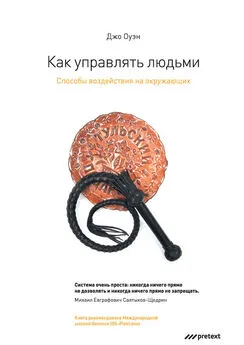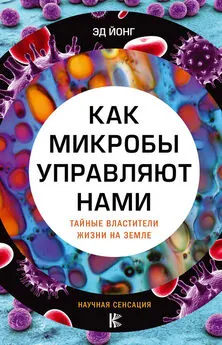Аланна Коллен - 10% Human. Как микробы управляют людьми
- Название:10% Human. Как микробы управляют людьми
- Автор:
- Жанр:
- Издательство:Синдбад
- Год:2018
- Город:Москва
- ISBN:978-5-906837-94-3
- Рейтинг:
- Избранное:Добавить в избранное
-
Отзывы:
-
Ваша оценка:
Аланна Коллен - 10% Human. Как микробы управляют людьми краткое содержание
Книга Коллен — это увлекательный рассказ о последних достижениях микробиологии. От состояния микрофлоры человека зависит его вес, бесперебойность работы иммунной системы, душевное здоровье и даже… выбор спутника жизни. Причину многих недугов современного человека — ожирения, аутизма, психических заболеваний, пищевых расстройств, аллергий, аутоиммунных нарушений и рака — следует искать в неумении беречь самых преданных и надежных помощников — наших «родных» микробов.
Наука о микробах открывает новые горизонты перед современной медициной. В том числе утверждает — и это хорошая новость, — что мы способны влиять на состояние микроорганизмов в нужном нам направлении.
10% Human. Как микробы управляют людьми - читать онлайн бесплатно полную версию (весь текст целиком)
Интервал:
Закладка:
3. Silventoinen, K. et al. (2004). Trends in obesity and energy supply in the WHO MONICA Project. International Journal of Obesity 28: 710–718.
4. Troiano, R.P. et al . (2000). Energy and fat intakes of children and adolescents in the United States: data from the National Health and Nutrition Examination Surveys. American Journal of Clinical Nutrition 72: 1343s–1353s.
5. Prentice, A.M. and Jebb, S.A. (1995). Obesity in Britain: Gluttony or sloth? British Journal of Medicine 311: 437–439.
6. Westerterp, K.R. and Speakman, J.R. (2008). Physical activity energy expenditure has not declined since the 1980s and matches energy expenditures of wild mammals. International Journal of Obesity 32: 1256–1263.
7. World Health Organisation (2014). Global Health Observatory Data — Overweight and Obesity. Available at: http://www.who.int/gho/ncd/risk_factors/overweight/en/.
8. Speliotes, E.K. et al. (2010). Association analyses of 249,796 individuals reveal 18 new loci associated with body mass index. Nature Genetics 42: 937–948.
9. Marshall, J.K. et al. (2010). Eight year prognosis of postinfectious irritable bowel syndrome following waterborne bacterial dysentery. Gut 59: 605–611.
10. Gwee, K.-A. (2005). Irritable bowel syndrome in developing countries — a disorder of civilization or colonization? Neurogastroenterology and Motility 17: 317–324.
11. Collins, S.M. (2014). A role for the gut microbiota in IBS. Nature Reviews Gastroenterology and Hepatology 11: 497–505.
12. Jeffery, I.B. et al . (2012). An irritable bowel syndrome subtype defined by species-specific alterations in faecal microbiota. Gut 61: 997–1006.
13. Backhed, F. et al. (2004). The gut microbiota as an environmental factor that regulates fat storage. Proceedings of the National Academy of Sciences 101: 15718–15723.
14. Ley, R.E. et al . (2005). Obesity alters gut microbial ecology. Proceedings of the National Academy of Sciences 102: 11070–11075.
15. Turnbaugh, P.J. et al . (2006). An obesity-associated gut microbiome with increased capacity for energy harvest. Nature 444: 1027–1031.
16. Centers for Disease Control (2014). Obesity Prevalence Maps. Available at: http://www.cdc.gov/obesity/data/prevalence-maps.html.
17. Gallos, L.K. et al. (2012). Collective behavior in the spatial spreading of obesity. Scientific Reports 2: no. 454.
18. Christakis, N.A. and Fowler, J.H. (2007). The spread of obesity in a large social network over 32 years. The New England Journal of Medicine 357: 370–379.
19. Dhurandhar, N.V. et al. (1997). Association of adenovirus infection with human obesity. Obesity Research 5: 464–469.
20. Atkinson, R.L. et al. (2005). Human adenovirus-36 is associated with increased body weight and paradoxical reduction of serum lipids. International Journal of Obesity 29: 281–286.
21. Everard, A. et al. (2013). Cross-talk between Akkermansia muciniphila and intestinal epithelium controls diet-induced obesity. Proceedings of the National Academy of Sciences 110: 9066–9071.
22. Liou, A.P. et al. (2013). Conserved shifts in the gut microbiota due to gastric bypass reduce host weight and adiposity. Science Translational Medicine 5: 1–11.
1. Sessions, S.K. and Ruth, S.B. (1990). Explanation for naturally occurring supernumerary limbs in amphibians. Journal of Experimental Biology 254: 38–47.
2. Andersen, S.B. et al . (2009). The life of a dead ant: The expression of an adaptive extended phenotype. The American Naturalist 174: 424–433.
3. Herrera, C. et al. (2001). Maladie de Whipple: Tableau psychiatrique inaugural. Revue Médicale de Liège 56: 676–680.
4. Kanner, L. (1943). Autistic disturbances of affective contact. Nervous Child 2: 217–250.
5. Centers for Disease Control and Prevention (2014). Prevalence of Autism Spectrum Disorder Among Children Aged 8 Years — Autism and Developmental Disabilities Monitoring Network, 11 Sites, United States, 2010. MMWR 63 (No. SS-02): 1–21.
6. Bolte, E.R. (1998). Autism and Clostridium tetani. Medical Hypotheses 51: 133–144.
7. Sandler, R.H. et al. (2000). Short-term benefit from oral vancomycin treatment of regressive-onset autism. Journal of Child Neurology 15: 429–435.
8. Sudo, N., Chida, Y. et al . (2004). Postnatal microbial colonization programs the hypothalamic–pituitary–adrenal system for stress response in mice. Journal of Physiology 558: 263–275.
9. Finegold, S.M. et al . (2002). Gastrointestinal microflora studies in lateonset autism. Clinical Infectious Diseases 35 (Suppl 1): S6–S16.
10. Flegr, J. (2007). Effects of Toxoplasma on human behavior. Schizophrenia Bulletin 33: 757–760.
11. Torrey, E.F. and Yolken, R.H. (2003). Toxoplasma gondii and schizophrenia. Emerging Infectious Diseases 9: 1375–1380.
12. Brynska, A., Tomaszewicz-Libudzic, E. and Wolanczyk, T. (2001). Obsessive-compulsive disorder and acquired toxoplasmosis in two children. European Child and Adolescent Psychiatry 10: 200–204.
13. Cryan, J.F. and Dinan, T.G. (2012). Mind-altering microorganisms: the impact of the gut microbiota on brain and behaviour. Nature Reviews Neuroscience 13: 701–712.
14. Bercik, P. et al . (2011). The intestinal microbiota affect central levels of brain-derived neurotropic factor and behavior in mice. Gastroenterology 141: 599–609.
15. Voigt, C.C., Caspers, B. and Speck, S. (2005). Bats, bacteria and bat smell: Sex-specific diversity of microbes in a sexually-selected scent organ. Journal of Mammalogy 86: 745–749.
16. Sharon, G. et al. (2010). Commensal bacteria play a role in mating preference of Drosophila melanogaster. Proceedings of the National Academy of Sciences 107: 20051–20056.
17. Wedekind, C. et al . (1995). MHC-dependent mate preferences in humans. Proceedings of the Royal Society B 260: 245–249.
18. Montiel-Castro, A.J. et al. (2013). The microbiota–gut–brain axis: neurobehavioral correlates, health and sociality. Frontiers in Integrative Neuroscience 7: 1–16.
19. Dinan, T.G. and Cryan, J.F. (2013). Melancholic microbes: a link between gut microbiota and depression? Neurogastroenterology &Motility 25: 713–719.
20. Khansari, P.S. and Sperlagh, B. (2012). Inflammation in neurological and psychiatric diseases. Inflammopharmacology 20: 103–107.
21. Hornig, M. (2013). The role of microbes and autoimmunity in the pathogenesis of neuropsychiatric illness. Current Opinion in Rheumatology 25: 488–495.
22. MacFabe, D.F. et al. (2007). Neurobiological effects of intraventricular propionic acid in rats: Possible role of short chain fatty acids on the pathogenesis and characteristics of autism spectrum disorders. Behavioural Brain Research 176: 149–169.
1. Strachan, D.P. (1989). Hay fever, hygiene, and household size. British Medical Journal , 299: 1259–1260.
2. Rook, G.A.W. (2010). 99th Dahlem Conference on Infection, Inflammation and Chronic Inflammatory Disorders: Darwinian medicine and the ‘hygiene’ or ‘old friends’ hypothesis. Clinical & Experimental Immunology 160: 70–79.
3. Zilber-Rosenberg, I. and Rosenberg, E. (2008). Role of microorganisms in the evolution of animals and plants: the hologenome theory of evolution. FEMS Microbiology Reviews 32: 723–735.
4. Williamson, A.P. et al. (1977). A special report: Four-year study of a boy with combined immune deficiency maintained in strict reverse isolation from birth. Pediatric Research 11: 63–64.
5. Sprinz, H. et al . (1961). The response of the germ-free guinea pig to oral bacterial challenge with Escherichia coli and Shigella flexneri. American Journal of Pathology 39: 681–695.
6. Wold, A.E. (1998). The hygiene hypothesis revised: is the rising frequency of allergy due to changes in the intestinal flora? Allergy 53 (s46): 20–25.
7. Sakaguchi, S. et al . (2008). Regulatory T cells and immune tolerance. Cell 133: 775–787.
8. Östman, S. et al . (2006). Impaired regulatory T cell function in germfree mice. European Journal of Immunology 36: 2336–2346.
9. Mazmanian, S.K. and Kasper, D.L. (2006). The love-hate relationship between bacterial polysaccharides and the host immune system. Nature Reviews Immunology 6: 849–858.
10. Miller, M.B. et al . (2002). Parallel quorum sensing systems converge to regulate virulence in Vibrio cholerae. Cell 110: 303–314.
11. Fasano, A. (2011). Zonulin and its regulation of intestinal barrier function: The biological door to inflammation, autoimmunity, and cancer. Physiological Review 91: 151–175.
12. Fasano, A. et al. (2000). Zonulin, a newly discovered modulator of intestinal permeability, and its expression in coeliac disease. The Lancet, 355: 1518–1519.
13. Maes, M., Kubera, M. and Leunis, J.-C. (2008). The gut-brain barrier in major depression: Intestinal mucosal dysfunction with an increased translocation of LPS from gram negative enterobacteria (leaky gut) plays a role in the inflammatory pathophysiology of depression. Neuroendocrinology Letters 29: 117–124.
14. de Magistris, L. et al. (2010). Alterations of the intestinal barrier in patients with autism spectrum disorders and in their first-degree relatives. Journal of Pediatric Gastroenterology and Nutrition 51: 418–424.
15. Grice, E.A. and Segre, J.A. (2011). The skin microbiome. Nature Reviews Microbiology 9: 244–253.
16. Farrar, M.D. and Ingham, E. (2004). Acne: Inflammation. Clinics in Dermatology 22: 380–384.
17. Kucharzik, T. et al. (2006). Recent understanding of IBD pathogenesis: Implications for future therapies. Inflammatory Bowel Diseases 12: 1068–1083.
18. Schwabe, R.F. and Jobin, C. (2013). The microbiome and cancer. Nature Reviews Cancer 13: 800–812.
1. Nicholson, J.K., Holmes, E. & Wilson, I.D. (2005). Gut microorganisms, mammalian metabolism and personalized health care. Nature Reviews Microbiology 3: 431–438.
2. Sharland, M. (2007). The use of antibacterials in children: a report of the Specialist Advisory Committee on Antimicrobial Resistance (SACAR) Paediatric Subgroup. Journal of Antimicrobial Chemotherapy 60 (S1): i15–i26. 3. Gonzales, R. et al . (2001). Excessive antibiotic use for acute respiratory infections in the United States. Clinical Infectious Diseases 33: 757–762.
4. Dethlefsen, L. et al. (2008). The pervasive effects of an antibiotic on the human gut microbiota, as revealed by deep 16S rRNA sequencing. PLoS Biology 6: e280.
5. Haight, T.H. and Pierce, W.E. (1955). Effect of prolonged antibiotic administration on the weight of healthy young males. Journal of Nutrition 10: 151–161.
6. Million, M. et al. (2013). Lactobacillus reuteri and Escherichia coli in the human gut microbiota may predict weight gain associated with vancomycin treatment. Nutrition & Diabetes 3: e87.
Читать дальшеИнтервал:
Закладка:










